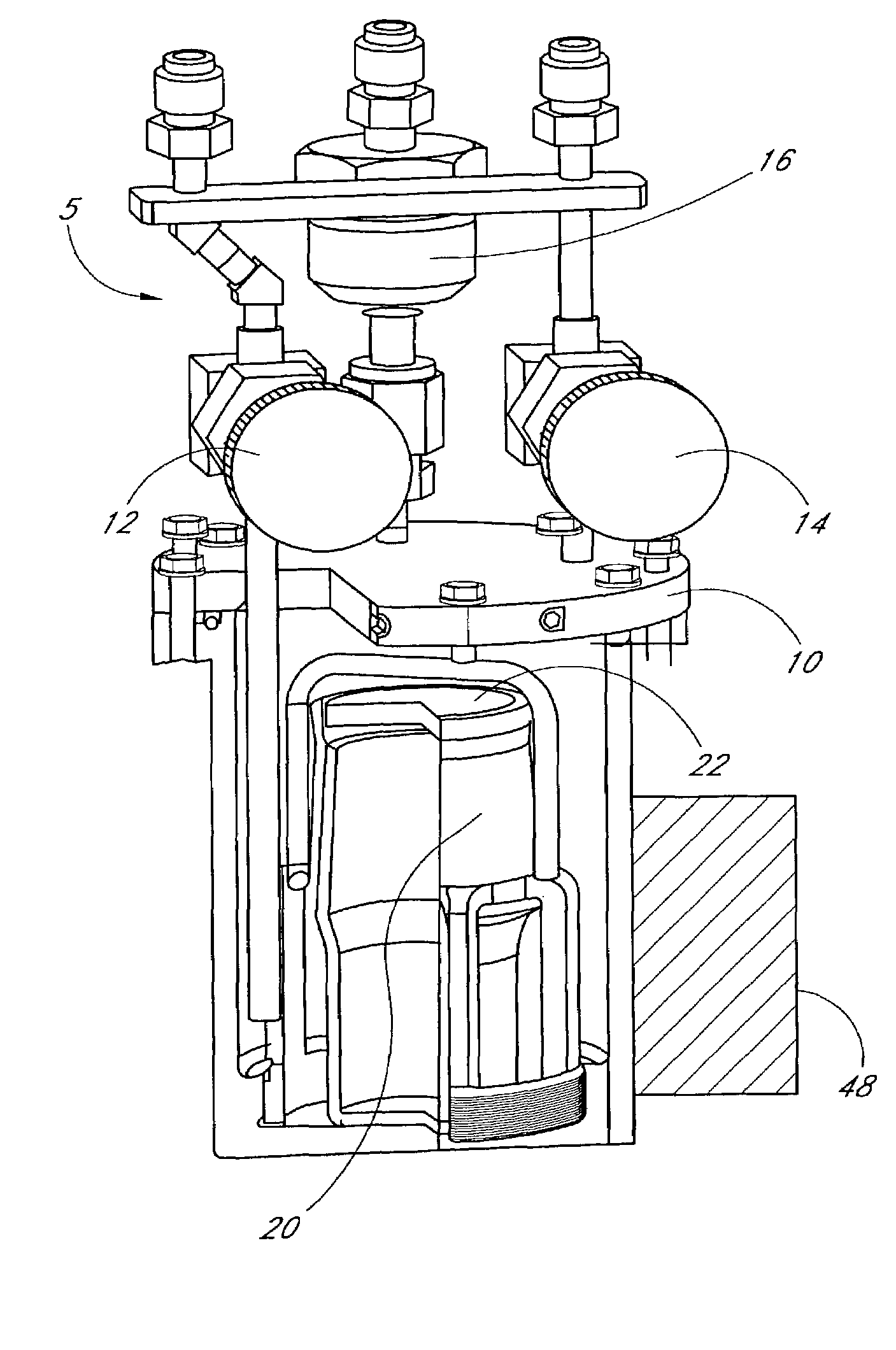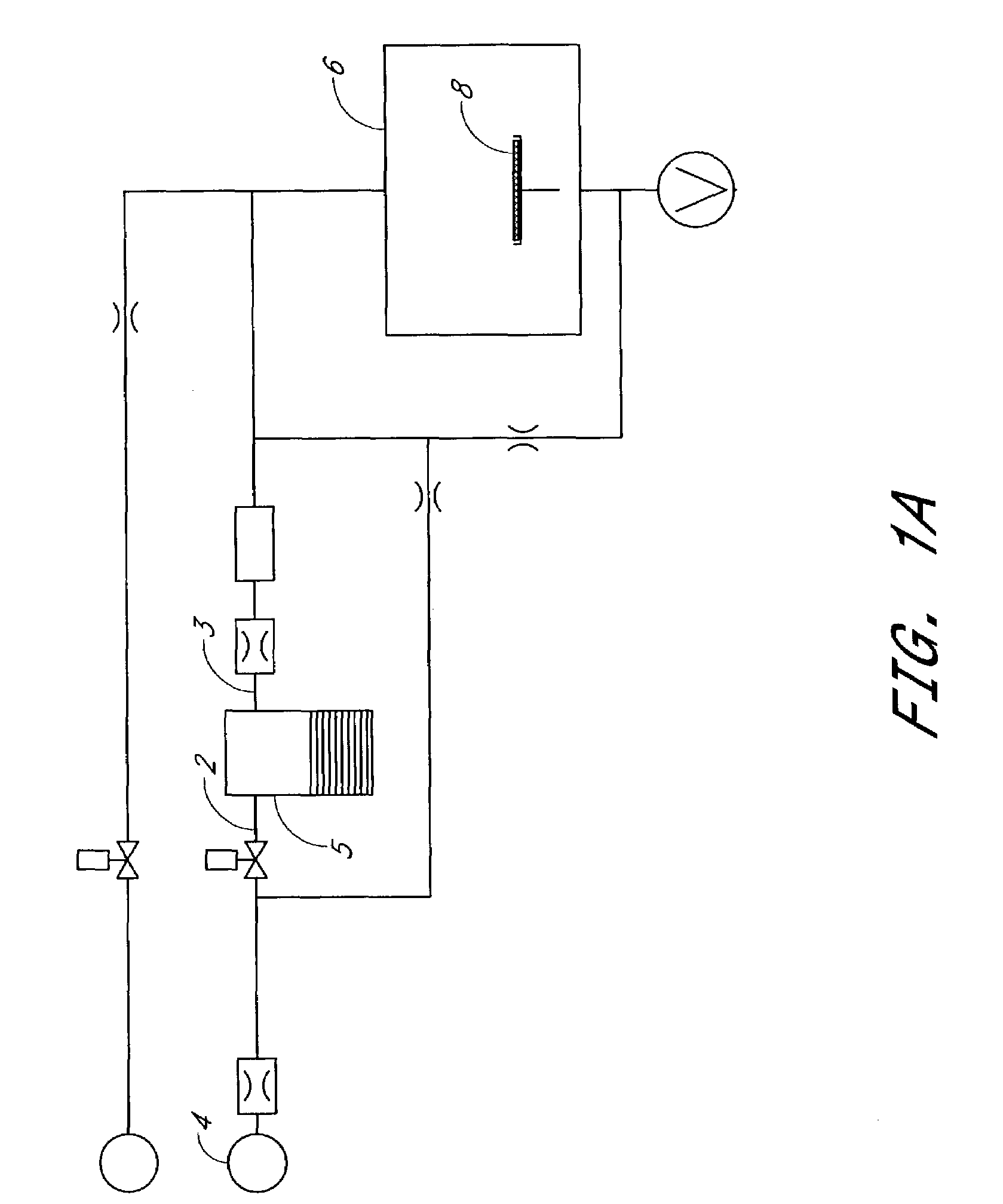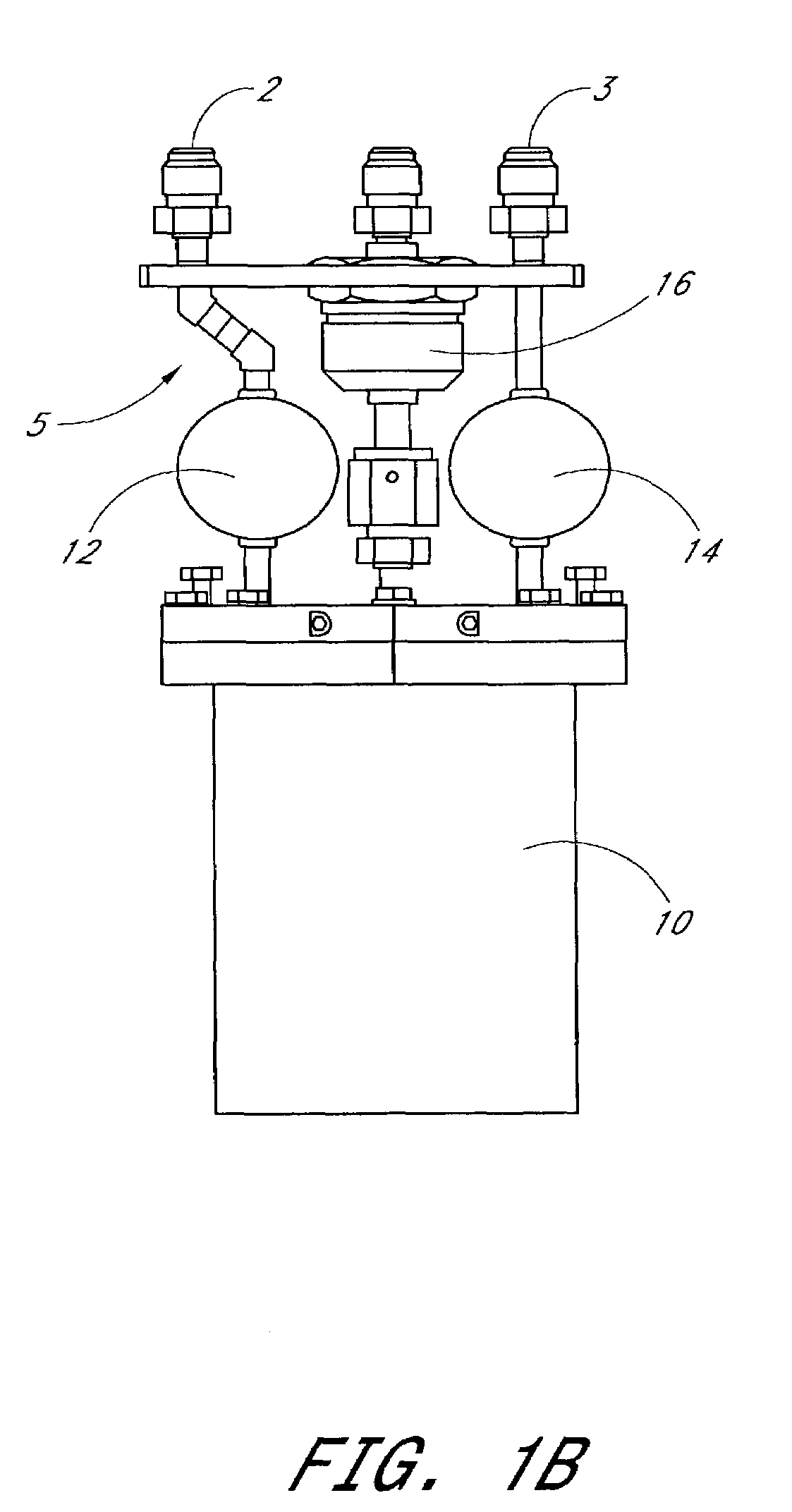System for controlling the sublimation of reactants
a technology of reactant sublimation and reactant powder, which is applied in the direction of chemical vapor deposition coating, electrical equipment, coatings, etc., can solve the problems of difficult use of solid precursors over liquid and gaseous precursors, poor thermal conductivity of precursor powder, and inability to readily find liquid or gaseous precursors for a certain element, etc., to enhance the sublimation effect of precursor powder, increase the thermal conductivity of batch, and reduce the formation of crus
- Summary
- Abstract
- Description
- Claims
- Application Information
AI Technical Summary
Benefits of technology
Problems solved by technology
Method used
Image
Examples
example 1
[0053]A Pulsar® 3000 ALCVD™ reactor, available commercially from ASM International, N.V. of Bilthoven, The Netherlands, was used for the deposition of HfO2 from alternating pulses of HfCl4 and H2O via sequential, self-saturating surface reactions. The HfCl4 vapor for those pulses was provided from a solid source. A mixture of 157.6 g of HfCl4 and 200.8 g of 99.5% SiC (obtained from Orkla Exolon, Norway) was loaded into a source container. In the mixture there was approximately 100 cm3 of each precursor. Thus, the mixture of precursor material and conductive elements was a 1:1 volumetric mixture.
[0054]As a result, the source temperature could be lowered from 200-205° C. (no carbide fill) to 180° C. (with carbide fill). It is believed that the recovery rate (i.e., time after pulsing that sufficient vapor develops for the next pulse) of the source improved because of the increased and more stable sublimation rate of the precursor. The deposition of thin films from the same precursor ba...
example 2
[0055]ZrCl4 powder was mixed with boron carbide (B4C) powder in a glove box. The mixture was loaded into a source boat made of glass. The source boat with the mixture was then placed in a glass tube to serve as a carrier tube. Ends of the tube were covered with Parafilm to prevent the exposure of ZrCl4 to room air and moisture. The tube was carried from the glove box to an F120 ALD reactor from ASM International N.V., and the source boat was moved from the carrier tube to a source tube (pressure vessel) of the reactor while inert nitrogen gas was flowing out of the source tube. After the loading of the source boat was completed and substrates were placed into the reaction chamber of the reactor, the reactor was evacuated to vacuum with a mechanical vacuum pump. Pressure of the reactor was adjusted to about 3-10 mbar with flowing inert nitrogen gas. The reaction chamber was heated to the deposition temperature and the ZrCl4 reactant zone of the reactor was heated also to the sublimat...
PUM
| Property | Measurement | Unit |
|---|---|---|
| length | aaaaa | aaaaa |
| temperature | aaaaa | aaaaa |
| heat | aaaaa | aaaaa |
Abstract
Description
Claims
Application Information
 Login to View More
Login to View More - R&D
- Intellectual Property
- Life Sciences
- Materials
- Tech Scout
- Unparalleled Data Quality
- Higher Quality Content
- 60% Fewer Hallucinations
Browse by: Latest US Patents, China's latest patents, Technical Efficacy Thesaurus, Application Domain, Technology Topic, Popular Technical Reports.
© 2025 PatSnap. All rights reserved.Legal|Privacy policy|Modern Slavery Act Transparency Statement|Sitemap|About US| Contact US: help@patsnap.com



